OCZ Vertex 4 Indilinx 256GB & 512GB SSD Reviews
OCZ Vertex 4 – Real World Tests
One of the most common operations performed on a PC is moving/copying files. Using a free application called Teracopy, we copied large numbers of two file types from one folder to another on the same drive. Teracopy allows us to objectively measure the time of transfer and using the same drive prevents other devices from tainting the outcome. The operation requires the drive to perform both sustained read and writes simultaneously. The first set of files is a 5GB collection of JPG’s of variable size and compression levels with a few movie (.MOV) files thrown in for good measure since most cameras now take video as well as stills. The second is a collection of MP3 files of various sizes which totals 5GB collectively. These file types were chosen due to their wide use and mixture of file sizes and compression levels.
OCZ Vertex 4 256GB:
OCZ Vertex 4 512GB:
Install Results: The larger 512GB Vertex 4 is clearly a little faster than the 256GB version and just slightly behind the Samsung. All of the drives in the comparison were within a few seconds of each other when all was said and done.
Windows Boot Times
Windows start up/shutdown time is always something people are interested in and we haven’t done it in a while because there was little variation with the majority of the SSDs. We recently began using an application called BootRacer to objectively measure the startup times of the drives. All of the instances of Windows were identical and freshly installed with only the video driver installed.
OCZ Vertex 4 256GB:
OCZ Vertex 4 512GB:
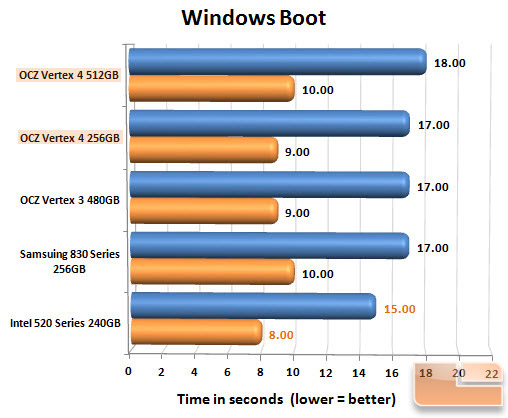
Test Results: Oddly, the 512GB Vertex 4 was the slowest of the group on boot but only one second off most of the others with the Intel 520 Series leading all. BootRacer rates them all as “Excellent” and a user would never know the difference between them without this type of measurement.
We’ll wrap this with a look at drive capacities and our final thoughts.

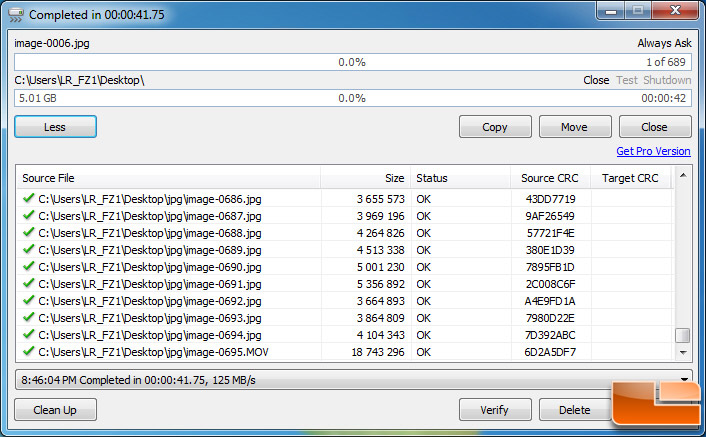
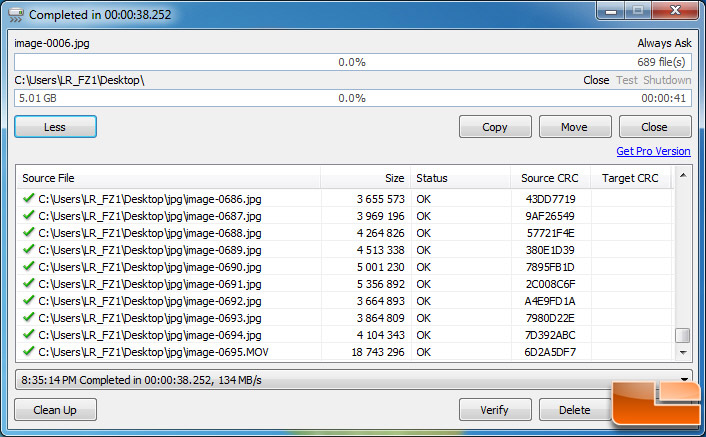
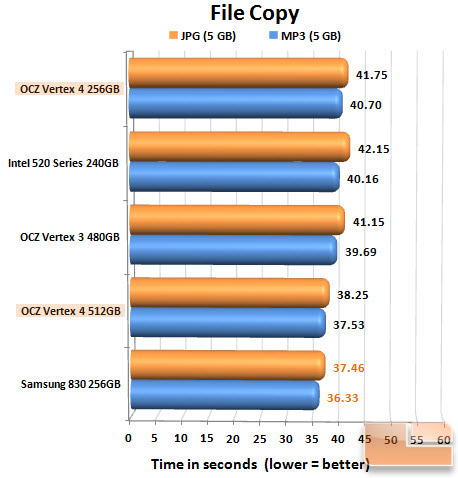
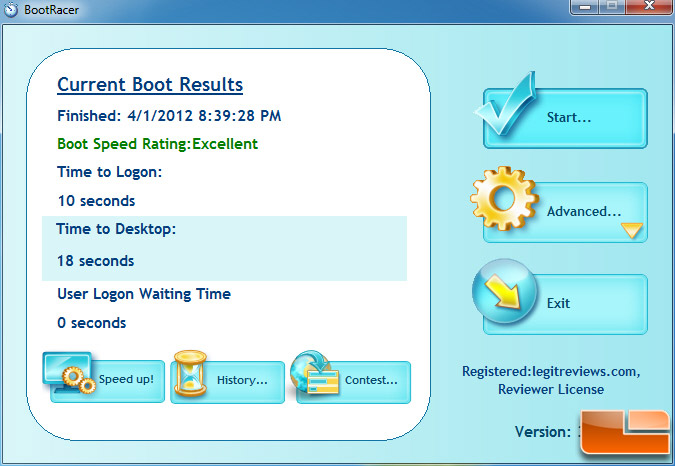
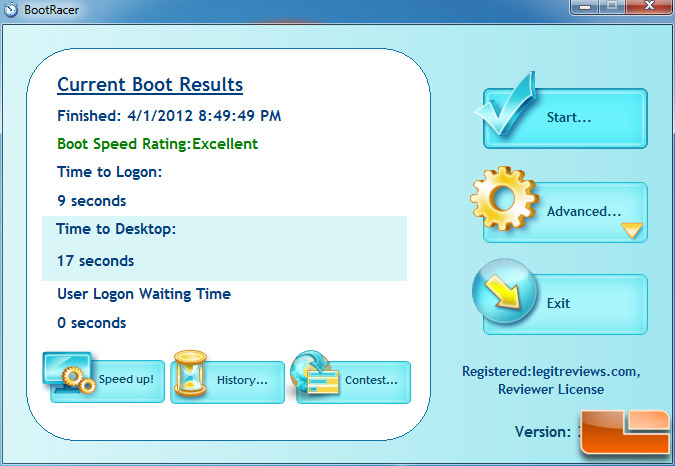
Comments are closed.